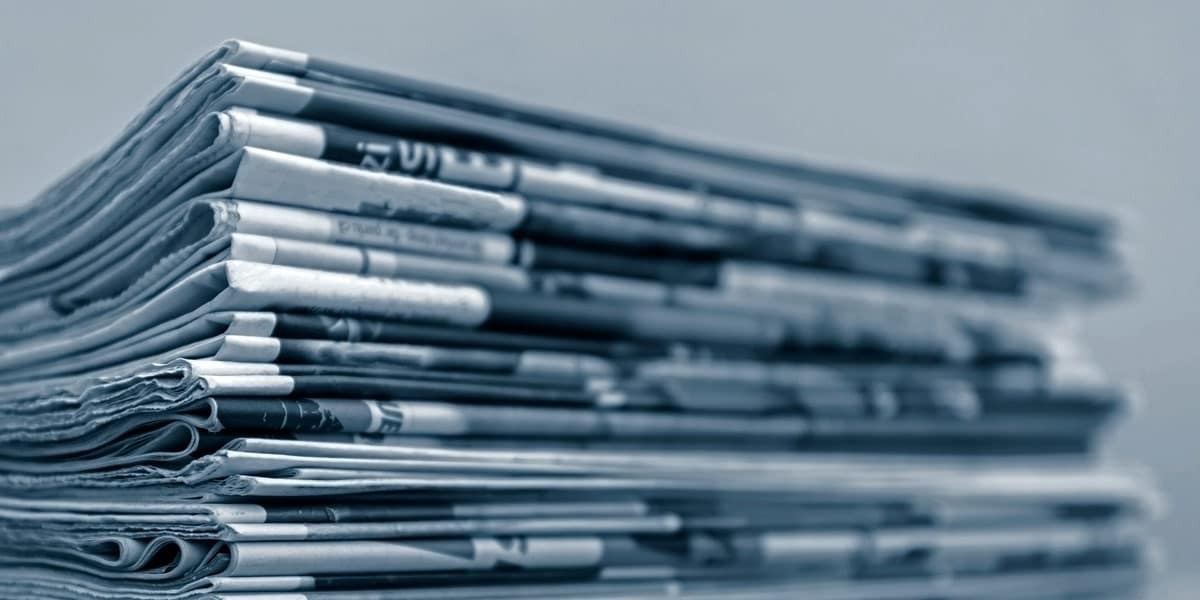
In general, good and bad news are always the source to fill a daily newspaper. The corona virus has been impacting our daily lives for a few weeks now, and will be dominant in the near future. The most trusted source for news is by far the printed newspaper. High-quality journalism researches interesting facts and figures and builds nice stories around them.
COVID-19 has changed everything. Journalists at hotspots do their jobs wearing masks and gloves, editors have to work isolated from each other. The editorial departments have to compile the content in virtual newsrooms from home. Newspaper printers have to work with reduced staff to have a backup team in place at all times. The distribution of printed paper has to be done by delivery staff exposed to the risk of being infected on their way to the households.
The consequences are diverse. Newspaper publishers still earn the biggest part of their money by selling printed newspapers with printed advertisements. They fight for long-term faithful subscribers who guarantee a recurring turnover every day. At the moment, advertisement activities have come down to a minimum, because there is no need to advertise for a shop that is closed anyhow or a holiday destination that cannot be reached. And the most coveted products like toilet paper or disinfection bottles need no promotion. Therefore, inserts and special interest editions are on hold for now. The page count per edition is reduced by 10 to 30% in most cases. A lot is written on the corona crisis, but there is hardly any content concerning sports or events. Free newspapers distributed to public transportation hotspots, trains and busses are reduced to a minimum volume, because travel bans are keeping consumers at home.
We now see newspaper printers asking for more plate volumes to build up security stock. Less printed pages mean less printing plates. The corona-free distribution of journalistic content via apps to tablets and smartphones gets a boost, but although the worldwide turnover is growing via these channels, it is coming from a very low level and not compensating for the losses of the printed distribution channel. At the moment, nobody can estimate whether these digital readers will come back to the printed newspapers, nor whether advertising income will return to a level comparable to the time before the coronavirus outbreak.
But where there is shadow, there is also light!
One important message is that printed paper is not a source for distribution of the coronavirus. This is true in case only one person is reading the paper at the final destination, of course. If it is shared with other people in the same household, the risk increases. Ironing newspapers is not necessary and will also not help!
Other good news is that since the start of the heavy impact of the coronavirus on the world, digital subscriptions increased by 15 to 270% max. The French government defined printed newspapers as an essential business that could not be shut down. The same thing happened in other European countries. In Greece, newspapers are now sold via supermarkets. Greek newspapers had been asking for this for decades. All over Europe, there has not been a single shutdown of a newspaper printing site due to COVID-19. In Ireland, customers are approaching us for the installation of cloud and data security solutions. Newspaper printers that took action to streamline their production flow in the past already now deal with more ease with the limitations caused by the corona crisis. Those prepress sites that migrated to secured cloud services in the past benefit from virtual workplaces and smoother communication channels. They have the opportunity to work successfully within a changed structure and with changed connections.
"In the midst of every crisis lies great opportunity."
Customers and vendors will take that opportunity to grow again after the corona crisis. And they will be better prepared for the next challenge.
Rainer Kirschke
Marketing Manager Newspaper – Business Division Offset Solutions